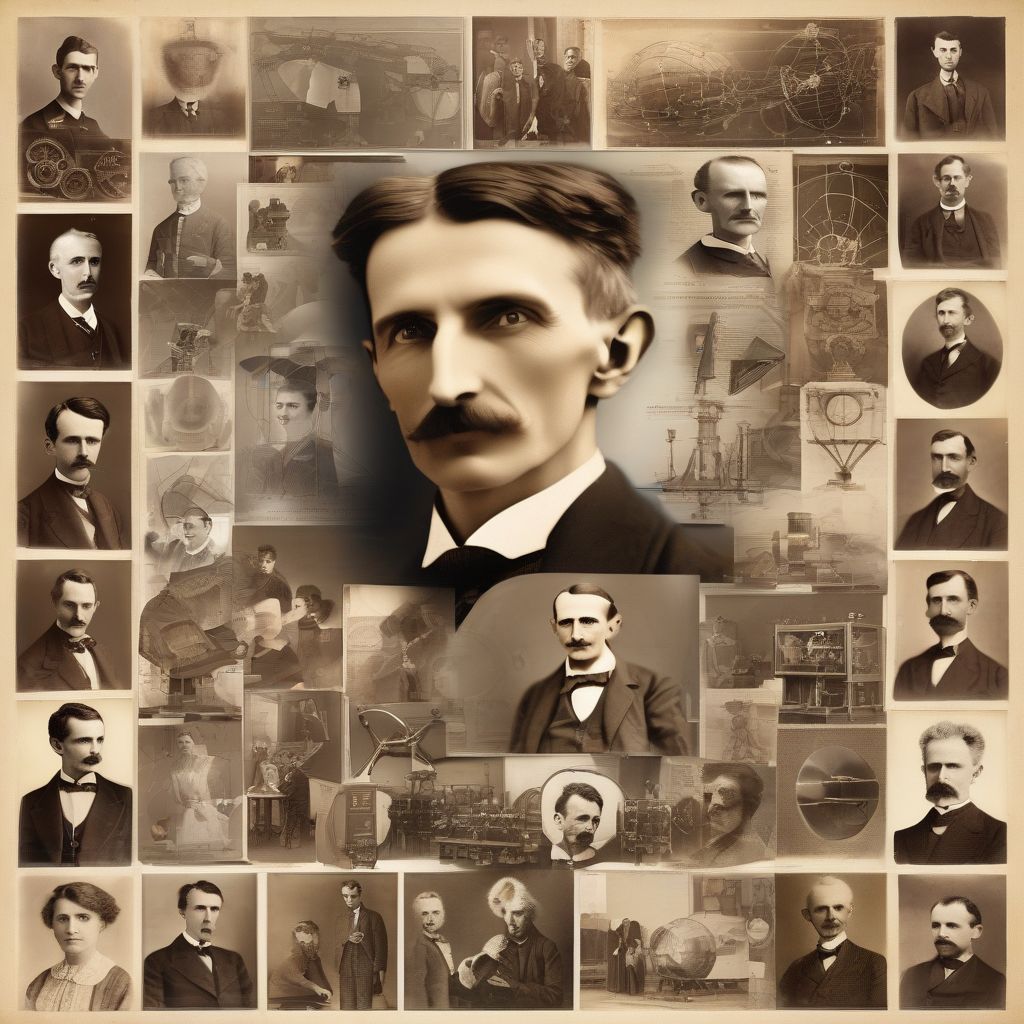Imagine a world without electricity, without cars, without the internet. Difficult, isn’t it? The world we live in today is shaped by the ingenuity and perseverance of revolutionary inventors. Analyzing their contributions not only allows us to appreciate the advancements we often take for granted but also provides invaluable insights into the process of innovation itself. From the spark of an idea to its widespread adoption, the journey of an invention is a fascinating story of creativity, problem-solving, and often, sheer determination.
Understanding the Impact of Revolutionary Inventors
Revolutionary inventors are not just individuals who create something new; they are the ones who fundamentally alter the course of human history. Their inventions often trigger a domino effect, impacting various aspects of our lives, from communication and transportation to medicine and entertainment. Analyzing their contributions allows us to understand these ripple effects and appreciate the interconnectedness of technological advancements.
The Process of Innovation: From Concept to Reality
The journey of a revolutionary invention often begins with a simple question: “What if?” This curiosity, coupled with a deep understanding of a particular problem, leads to the formation of a concept. However, the path from concept to reality is rarely straightforward. It involves rigorous experimentation, countless failures, and unwavering dedication. Thomas Edison, for instance, famously said, “I have not failed. I’ve just found 10,000 ways that won’t work.” This quote perfectly encapsulates the iterative nature of innovation.
Measuring the Impact: Beyond the Tangible
While the tangible benefits of an invention are often easy to quantify, the true impact goes far beyond the immediate application. Consider the invention of the printing press. While its initial purpose was to reproduce texts more efficiently, its long-term impact on literacy, education, and the dissemination of information was truly revolutionary. Similarly, the invention of the internet has not only connected billions of people globally but also created entirely new industries and transformed the way we live, work, and interact.
Case Studies: Analyzing the Contributions of Notable Inventors
Examining specific examples can illuminate the diverse contributions of revolutionary inventors. Let’s delve into the legacies of a few key figures:
Nikola Tesla: The Visionary of Electricity
Nikola Tesla’s contributions to the development of alternating current (AC) electricity revolutionized power generation and distribution. His inventions laid the foundation for the modern electrical grid, powering homes, businesses, and industries worldwide. Tesla’s visionary approach to science and engineering continues to inspire inventors today.
Marie Curie: Pioneering Research in Radioactivity
Marie Curie’s groundbreaking research on radioactivity not only earned her two Nobel Prizes but also opened up new avenues in medicine and scientific research. Her discovery of radium and polonium laid the groundwork for radiation therapy, which has saved countless lives.
The Wright Brothers: Taking Flight
The Wright brothers’ invention of the airplane transformed transportation forever. Their persistent experimentation and meticulous attention to detail paved the way for the development of the aviation industry, connecting distant corners of the world and shrinking the globe in a way previously unimaginable.
The Future of Innovation: Building on the Shoulders of Giants
As we analyze the contributions of revolutionary inventors, we gain a deeper appreciation for the importance of continuous innovation. The advancements of today are built upon the foundations laid by those who came before us. By fostering a culture of creativity, collaboration, and perseverance, we can continue to push the boundaries of human ingenuity and shape a better future.
 Revolutionary Inventors Impact
Revolutionary Inventors Impact
Lessons from the Past, Inspiration for the Future
The study of revolutionary inventors is not simply a historical exercise; it is a source of inspiration and guidance for future generations. By understanding the challenges they faced, the breakthroughs they achieved, and the impact they made, we can learn valuable lessons about the process of innovation and apply them to our own endeavors.
The Ripple Effect of Innovation
One crucial aspect to consider when analyzing the contributions of revolutionary inventors is the ripple effect their inventions have. The invention of the wheel, for instance, not only revolutionized transportation but also influenced the development of countless other technologies, from gears and pulleys to clocks and engines. This interconnectedness highlights the far-reaching consequences of even seemingly simple inventions.
The Importance of Collaboration and Openness
While many inventors are often portrayed as solitary geniuses, the reality is that innovation thrives in environments of collaboration and open communication. The sharing of ideas, the exchange of knowledge, and the constructive criticism of peers are essential ingredients for fostering creativity and accelerating the pace of progress.
The Role of Failure in the Innovation Process
Failure is an inevitable part of the innovation process. It is through our mistakes that we learn, adapt, and refine our ideas. Embracing failure as a learning opportunity is crucial for cultivating resilience and ultimately achieving success. As Thomas Edison wisely observed, every failed experiment brings us one step closer to finding the solution that works.
Conclusion
The analysis of the contributions by revolutionary inventors reveals a story of human ingenuity, perseverance, and a relentless pursuit of progress. From transforming transportation to revolutionizing communication, these individuals have shaped the world we live in and continue to inspire us to push the boundaries of what is possible. By studying their legacies, we gain valuable insights into the process of innovation, the importance of collaboration, and the power of embracing failure as a stepping stone to success. What revolutionary inventions will shape the future? The answer lies within the curious minds and determined spirits of the next generation of innovators. Share your thoughts and ideas in the comments below. Let’s continue the conversation and inspire each other to create a better future.
- Barretta, Gene (Author)
- English (Publication Language)
- Verlag, BuchBlick (Author)
- English (Publication Language)
- Stone, David G. (Author)
- English (Publication Language)
- Carson, Michael A (Author)
- English (Publication Language)
- Graber, David (Author)
- English (Publication Language)
- Helfand, Lewis (Author)
- English (Publication Language)
- Hardcover Book
- Shulman, Mark (Author)
- Rivers, Kai (Author)
- English (Publication Language)
- Gorenstein, Nathan (Author)
- English (Publication Language)
- Used Book in Good Condition
- Flexner, James T. (Author)










